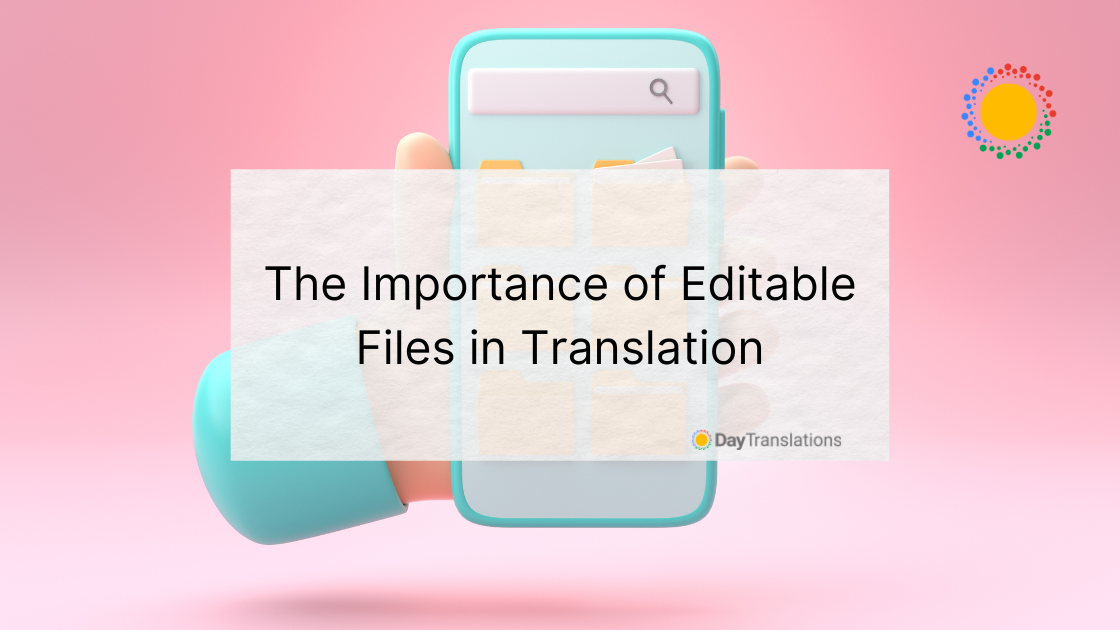Translation is difficult and exacting work, which is why it is important for translators to plan their day. If the translator is working at home, he or she must see to it that unscheduled interruptions are minimized. As the task requires focus, it is also important for the translator to schedule some time to relax in order to recharge and improve their energy levels. It is important to have a fresh mind after taking a break.
The translator has to prepare the documents for translation by ensuring that the files received from the client are complete. The translator must be clear about all the details concerning the job, especially the specific requirements and expectations of the client. Some clients only want the main body of text to be translated and omit the image captions.
Clients must understand the processes of translating a document and what the translators need from them as well to ensure that the translation process would go smoothly. One of things that translators need is an editable file.
Why is an editable file important when the translator and the translation services provider normally have tools to ensure that the translator can start work without any issue? Is it all right for a client to send a PDF file for translation? Let’s find out.
Difficulty in translating a PDF file
A PDF or a Portable Document Format captures all of the printed document’s elements as an electronic image. A PDF reader is needed to view the document. It is useful if you want to retain the original appearance of the document.
However, if the client orders a translation, it is better to send an editable file. A PDF is a read-only document and will have an effect on the process of translation. A PDF file must be converted using an OCR or optical character recognition app to convert the document into a Word file. But with the right tools and knowledge, PDF editing is made simple, streamlining your translation workflow.
The time it takes to convert the PDF to Word takes time, depending on the document’s quality. A handwritten or scanned document that was saved as a PDF file is difficult to convert. Now think of converting a 500-page PDF document and you’ll realize how the conversion process can cause the translation to be delayed. The translation will involve a higher cost as more time and work will be consumed in preparing the document.
Likewise, it is important to note that even an OCR is not reliable in converting the file correctly. There would be instances when portions of the document are not converted as the OCR failed to read them.
Difficulty with scanned documents
When a language services provider (LSP) receives scanned files, such as medical documents for translation, the difficulty for the LSP is the same as with PDF documents. Some documents are handwritten by doctors, which could be very hard to decipher.
Often the LSP has to handle scanned document such as doctors’ notes, patient questionnaires, clinical documentation, pathology reports, hospital release forms, death certificates, patients’ medical histories and other documents related to clinics and patients.
Scanned handwritten documents present substantial challenges if these are the types of source documents for translation. In order to produce high quality translation, it is better to request the client to provide editable files, as these are more compatible with the translation tools the translation services provider is using. It is easier to alter the design of the translated file to make it look like the original.
Avoiding headaches with scanned documents
Translation companies institute safeguards and methods to ensure that they can provide high quality translation despite issues with documents that are not editable, such as scanned source documents. However, they would much prefer to receive editable files because it will lower the cost of translation. The process would be faster, thus saving time and money for the clients. Here are some tips on how to minimize headaches when handling scanned documents.
- Recreate the scanned hard copies.
You can do this by recreating the file into an electronic format, such as PDF and then using an OCR to convert it into Word, which can be prepared for translation using CAT tools that have translation memory function. The quality check would be automated so the tool searches for errors and compare the recreated material with the source file.
There are three options for the LSP to choose from:
- The translator works with the scanned document by recreating an electronic file of the translated copy without the aid of any translation tool. The translation is not saved in the translation memory for succeeding translations. This option yields the lowest quality in translation.
- A technician from the translation company recreates the scanned document into an electronic file in order for the translator to use the CAT tools to produce a produce two files in the source and target language. This method provides the highest quality of translation.
- The scanned material is converted into the source document by using an OCR although the app has issues with Hebrew and Arabic languages and with poor handwriting and images. The translator would need to refer to the original document to check for elements that the OCR failed to pick up. It the scanned document is very clear and the original language is easy to translate, it could result in a translation of fair quality.
No matter what option the translator chooses, the formatting must be done to ensure that source formatting and layout are maintained.
- Explain to the client that recreation of the document involves additional cost.
Often, scanned documents, such as medical and health-related documents are translated into one language only. Therefore the cost of recreating the source file would be higher. The cost would be lower if the project is larger and involves more than just one language.
- Discuss with clients the requirements, expectations and results when handling difficult source documents.
The quality of the translation depends on the recreation method chosen, the legibility of the handwriting, scanning quality and the source document’s quality as well. The client and the LSP must agree on how to handle texts that are unreadable.
- Provide translator access to all reference materials available
Aside from assigning the task to a subject matter expert, the translator must have access to all the reference materials available. If there are filled up forms, it would be better for the LSP to request for a blank copy of the form, so the translator can create a template, which can facilitate the recreation of the source. Translation memories from clients will help as well to make the translation consistent.
Clients’ responsibilities
Clients should also understand that their preparation of the source documents for their contracted LSP helps prevent headaches for everyone involved in the translation project.
They should ensure the files to be sent to the translation agency are complete. The source files should be the final and approved version of the document that the company wants translated. It would help maintain consistency, as there wouldn’t be work stoppages due to changes. The cost would be lower and the time to finish the project would be shortened.
It helps the LSP give you a more accurate cost estimate for the project. The LSP and the translator can fully commit to the agreed deadline.
Some final words
The language services provider provides estimates based on the difficulty of the job. It could be based on the quality of the source material, the subject matter and the source and target languages.
Providing an editable file helps the translator extract the content and process it in preparation for translation. An editable file helps the translator have more control over the translation process.
Clients should ensure that they send the source materials. This is crucial since the source materials are what provide the context. Because language is subjective, it is important for the translator to fully understand the intent of the document and how the message should be expressed. This is also an assurance that the translation would be accurate and of high quality. The source file also helps the translator to make full use of the client’s translation memory that not only speeds up the translation and makes it consistent but also lowers the translation cost.
It is beneficial to the LSP if the client sends the package files, meaning that particular fonts, graphics, special designs images and photographs and source links for documents created in Photoshop, Illustrator or InDesign. These are often the case when the source documents are advertisements, magazine pages, infographics or brochures. The LSP would be able to reconstruct the final translated document according to your specifications.
As mentioned, the LSP has tools to recreate your source documents if you sent them PDF files and scanned materials. However, be prepared for the additional cost and the longer preparation time before the actual translation could begin. Be definite about how you want the final translation should be formatted, as some clients want to use the files for desktop publishing.
If you expect high quality and accuracy, send editable files to your LSP. At the same time, specify the format that you want the final translation to be, because the LSP would deliver the final translated document in the same format as the source document.












Sorry, the comment form is closed at this time.